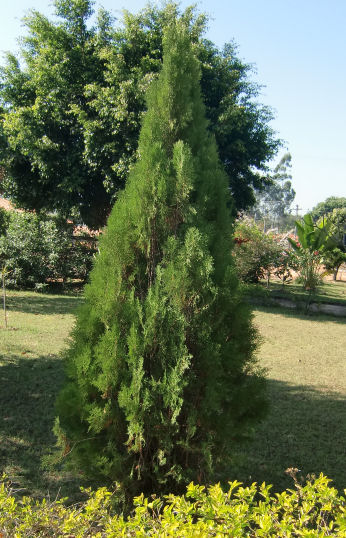

Thuja orientalis (Oriental Biota)
The Oriental Biota (Thuja orientalis) is one species from the genus Thuja of the subfamily Cupressoideae in the family Cupressaceae.
The distribution of the Oriental biota is ranging from Corea, over China to Eastern Russia. As the species is cultivated for a long time in China, nothing is known about the precise natural distribution within China. These trees grow at altitudes from 1000 to 11000 feet.
The Oriental biota is an evergreen to about 67 feet tall tree that can reach a trunk diameter of over 3 feet. The thin bark is light gray-brown or reddish brown, it peels off in long strips. The crown is oval-shaped cone in young plants and broadly rounded or irregular in older trees. The scale-like leaves are 1 to 3 mm long.
The Orientgal biota is monoecious. The male yellowish-green cones are oval and 2 to 3 mm long. The at first blue-green then red-brown female cones are nearly spherical, have only a diameter of 3 mm, at maturity they are more oval and about 0.8 inches long, they have sixt to eight thick, woody cone scales and are located individually at the ends of the branches. Per fertile seed scale two wingless, grayish-brown or purplish-brown seeds are developing, they are 5 to 7 mm long and 3 to 4 mm wide.
The seedlings have two cotyledons. The Oriental biota can be 1000 years old.
In our front garten stands one specimen. This species is also hardy in Germany without any winter protection, has no problems with extreme cold in very cold exception winters in Germany.

Thuja orientalis in our front garden in July 2010.
Back to the Ornamental Plant List
Updated by Joachim Jaeck on August 1st, 2010